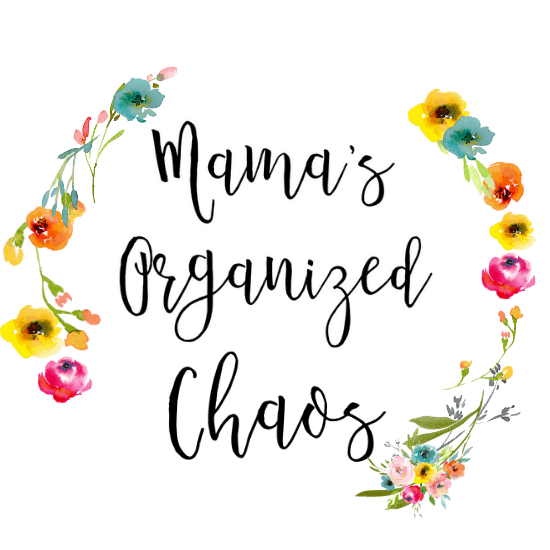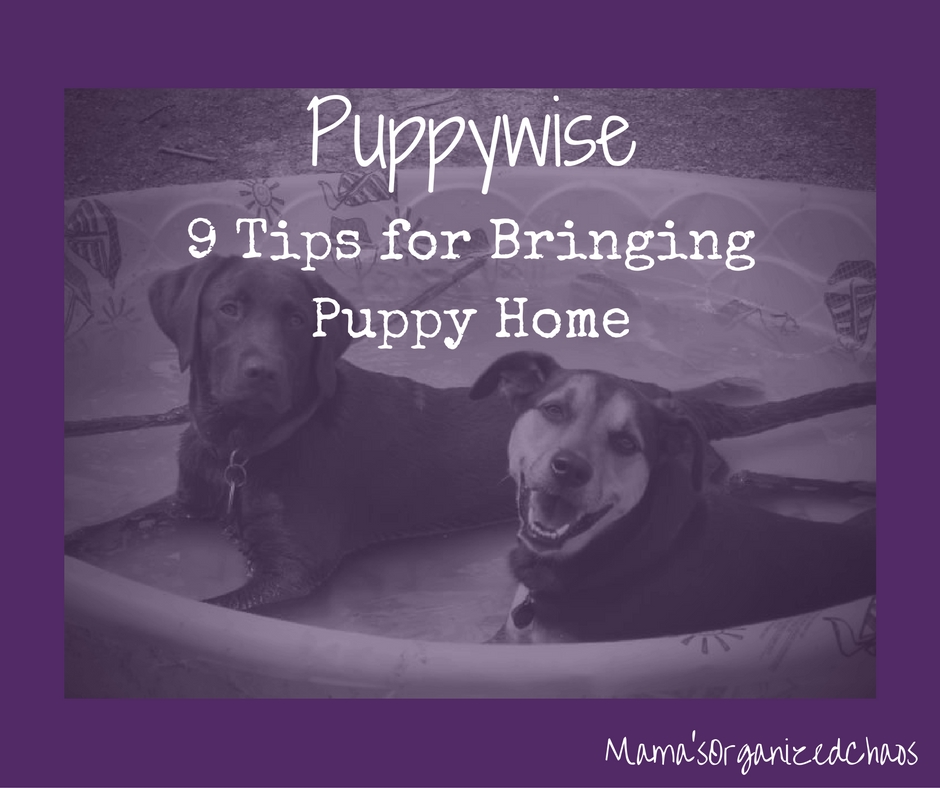A few months ago, Carrie from the Babywise Friendly Blog Network was joking with me and asked for a “Puppywise” post. Babywise Friendly Blog Network humor LOL! I decided to run with it, however, and came up with 9 Tips for Bringing a Puppy Home. This post appeared at Wiley Adventures on August 11, 2016.
9 Tips for Bringing Puppy Home
Just as your baby thrives on a routine of eat, wake, sleep, your dog can as well! It is important to get in full feedings with your dog in the morning and night, and provide naps at the same time each day. Your puppy needs to be well rested! If he is well rested, he will be more eager to learn and simply behave better throughout the day.
While that all sounds great (kind of) LOL…. dogs are not humans. I’d love to sit here and say that there is a puppywise method, as there is a babywise method. There are some wise things we can do with our puppies to help them (and us) out in those first few months, however!
1. Make the introduction to the family as smooth as possible.
Inform your children about puppies before the dog comes home. Allow them to ask questions, and talk about appropriate behavior with dogs (being gentle, no tail pulling, no touching eyes or ears, etc.). Inform them that some of their time, and your time will now be going to the new addition to the family so they know what to expect.
On the flip side (if possible), bring some things of yours for the puppy to smell before you bring the puppy home. Let the puppy have a chance to get used to the smells (blankets and worn shirts work great), before they enter the home. You can even do this on the car ride to your house.
Have the children meet the puppy ahead of time (if possible). This will show you a lot about the dogs’ temperament, and if he will be well suited as a family dog.
When you do get the puppy home, give him a chance to just explore and take things in on his own. It is a new place for him, and he will be comforted by getting to explore before he gets bombarded with people.
2. Set boundaries for your puppy.
Set boundaries immediately for your puppy. If he is not allowed in the baby room, make that clear as of day 1. Dogs thrive on boundaries just as children do. They also test those boundaries…just as children do! Think about what the boundaries are ahead of time, so you can implement them as soon as possible.
3. Set boundaries for your children.
Just as you need to set boundaries for your new dog, your children need to have new boundaries set as well. If the dog isn’t allowed to play with the children’s toys, perhaps the children aren’t allowed to play with the dog toys. Maybe you are using a crate and also need to set a boundary that it is only for the dog. You will now have water and food bowls on the floor. Clear expectations with those should be set as well.
4. Stay consistent.
Whatever boundaries you chose above, for both your pet and your children, stay consistent. This will be key to having success. Your new dog will learn quickly if he hears the same commands over and over. Don’t forget, however, that he’s a puppy! Just as your newborn baby didn’t understand directions at first, neither will he. Put in the time to teach him, and he will come around!
5. Involve your children.
If your children are old enough, involve them with the new responsibilities of the household. They can feed the dog, brush the dog, play with him, take him on walks, etc. Choose a level of responsibility that matches their age, of course.
6. Give your puppy a place to rest.
Just as you made it a priority to give your children their own space to rest, it is important to give your puppy a place to rest or have alone time. Think about where you’ll be spending most of your time during the day, and where he’ll be sleeping. If you have multiple floors, it is handy to have a dog bed on each floor (unless he is welcome on the couch).
7. Use a crate.
If you have kids, you have toys and stuff everywhere. Now that you have a puppy, you’ll have to puppy-proof, just as you used to baby-proof, or you’ll possibly have some chewed up items. I highly recommend using a crate when you are out or sleeping. Research shows that dogs love their crates as long as it stays a positive place (never put him in it as a punishment). You can start making it a positive association by feeding your puppy in the crate.
8. Give your puppy a place to play.
Give him his own toys, and a place where he can find them. If you have a basket just for his toys, he’ll soon learn that anything in the basket is fair game, but all other toys are off limits.
9. Be observant of puppy cues.
With implementing babywise, we all have lots of practice watching our babies cues. Dogs have sleepy cues too! If you notice your dog yawning, or eyes drooping…or perhaps he’s trying to lay down but your children are trying to play with him… having a crate with a bed in it can be a useful tool! Put him in the crate just as you’d put a baby in a crib for a nap. If nothing else, he’ll at least get some quiet time or alone time. You probably won’t have the puppy on a set schedule like you did with your little ones, but, if you can notice a pattern and work towards that, why not!? If you can have him napping at the same time as your little ones… why not!?! Watch his cues and see what he’s telling you. A rested dog is much less likely to get aggravated or snip at little ones when they are having those annoying moments (yes he will be annoyed by them at times if they are still young). LOL So, you might as well observe his cues and see what you can figure out, so you have a happy puppy!
 |
| Click here to join the MOC Village |


